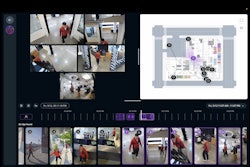
Today’s supply chain professionals understand how critical data collection is for driving informed decision-making in their processes. Carriers, shippers and 3PLs have been collecting data for years, feeding it into tech solutions that provide business intelligence that can inform decisions with up-to-the-minute information.
Over time, this data enhances both long-term decision-making, such as where to make smart business investments that provide the most value or real-time decisions, like dynamic routing.
Generative AI tools are becoming increasingly adopted across industries for their natural language processing abilities, but technology providers in the transportation space have long leveraged other forms of AI, such as statistical AI to analyze large amounts of data to find patterns, and symbolic AI that can be programmed to recommend process optimizations.
Agentic AI is another more recent iteration of AI, which builds upon symbolic AI with a high degree of autonomy and access to information; think of virtual assistants or even self-driving vehicles. What it shares with symbolic AI is goal-seeking and the ability to take actions. What is new is the ease with which this meets humans where they are in natural language, voice and visuals.
With such a plethora of available AI tools, transportation companies can no longer afford to ignore the benefits of AI. But what are the best ways to implement it? Here’s a look at how AI is being used in the industry today, and how the supply chain can leverage it to progress further.
Automation and AI
To begin, it’s important to clarify the difference between AI and automation. With the sophistication of today’s AI tools, it may seem like we’re one step away from a robot takeover where humans are no longer involved in the decision-making process.
However, although there is plenty of crossover, these two concepts should be considered separately.
Automation is perfect for delegating repetitive, mundane tasks to software – think of administrative or clerical-type work. It may be able to make decisions without human intervention, but it will do essentially the same task or tasks day in and day out.
While AI also gives decision-making power to software, it has a specific set of parameters and learns from feedback, adapting future decision-making based on that feedback. Due to this, AI can sometimes use data and the parameters it’s given to come to unusual or unexpected conclusions.
This is why it’s best to take a cautious approach; you shouldn’t give AI free reign over all data and let it run your entire business, but you could use it to come up with some recommended options for you or a colleague to review and approve, for example.
The impact of AI is everywhere
AI is progressing in sophistication every day, bringing new value, features and benefits to logistics providers around the world. But where can it have the greatest impact?
The easy answer: everywhere. The sky’s the limit when it comes to what AI can do with clean transportation data – special emphasis on “clean.”
Because there is so much data coming in, it’s crucial that the data is accurate and correctly labeled for AI solutions to provide any real value. Many logistics companies are still on a journey towards “AI readiness,” a great place to start is evaluating the stream of data that you already have access to.
That said, there’s no point in implementing AI for AI’s sake; not every area of the business will be the perfect fit for using AI. Keep in mind that AI performs best with things that have concrete financial value, that are easy for algorithms to score, or have well-understood variables.
AI produces the best business results when it’s able to experiment; it needs to collect data from repeated decision-making cycles in order to try different solutions and learn. You probably wouldn’t want to use AI for decisions you make once a year. It could take decades for the software to gather enough information from an annual decision to provide accurate recommendations.
Ideally, find opportunities where AI models can analyze thousands of decisions per day in order to gather feedback that improves its performance.
Models should be trained and fed with not just one company’s data, but with data from across the transportation industry to ensure that true benchmarks are being set – not just one company at a time. This more collaborative “platform” approach helps everyone get ahead.
Supply chain pros are using AI tools to slash manual time spent on repetitive tasks and improve communication between parties – two examples are quotation and procurement, as well as visibility and ETAs. Here’s a closer look.
Quotation and procurement
One of the best use cases for symbolic or agentic AI in transportation is spot freight – where companies are working with a set budget and clear constraints on carrier types and lead times. The way negotiations are structured is relatively straightforward and repeated – an offer is made, wait for a response, submit a counteroffer, accept it or end negotiations. This is a perfect example of where AI models can save literally thousands of human hours by handling these negotiations autonomously.
Tendering is a great example of where statistical AI can revolutionize procurement. Software can ingest and analyze huge amounts of data to predict pricing, allowing it to present tenders and pricing offers to a select number of carriers. If no carrier accepts the tendered load at that price, the AI can come back with additional rounds as needed.
AI has the potential to transform carriers’ operations, giving them the ability to automatically provide customers with immediate and accurate spot freight pricing based on predicted market rates. This capability allows carriers to increase the number of opportunities they can quote, and ultimately, win more new business.
Visibility and ETAs
Visibility has been a long-standing challenge in the transportation and logistics industry. Bridging the gap between carriers and shippers enhances visibility, transparency and efficiency.
One common pain point: predicting estimated load arrival times for both parties. These days, any number of issues could cause a delay, from extreme weather to labor strikes, traffic jams and equipment issues. These issues may appear to be totally random, but an AI model can analyze this data over many years and identify hidden patterns that previously seemed incidental.
Due to this, AI is typically better at predicting arrival times than humans. AI-assisted ETA tools can also be a game-changer for logistics companies to ensure they’re ready to receive loads at the right time.
Collaboration for maximum mileage
AI is being used today in supply chains all over the world, enhancing the efficiency of administrative work and helping companies focus their team’s energy where it matters most.
Achieving the full potential that AI tools can offer hinge on the proper collection and sharing of data – this collaboration is imperative. Industry players including shippers, carriers and 3PLs must cooperate by sharing data that feeds AI models in order to maximize positive outcomes for all.
Taking this collaborative approach will propel the industry toward the ultimate goal of digitization, benefiting all.



















